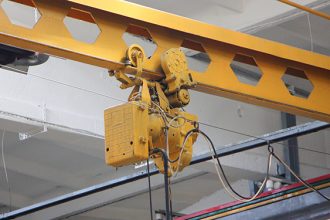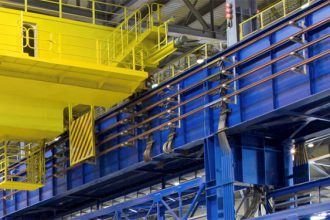Lift Any Load With Customized Below The Hook Attachments
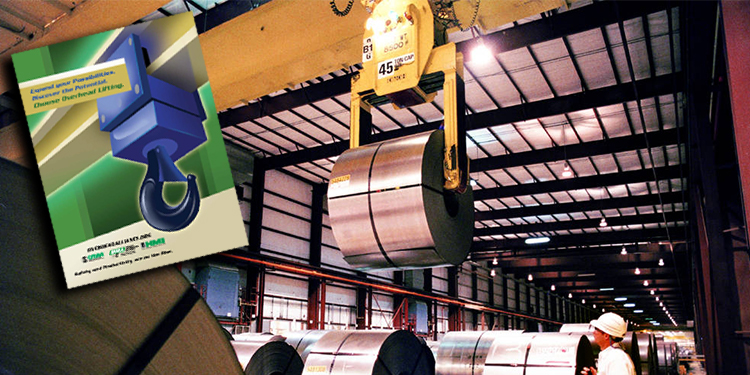
This is the ninth in a series of posts detailing 13 reasons why overhead lifting and handling technologies — specifically cranes, hoists, and monorails — can improve a manufacturing or distribution operation’s efficiency, productivity, safety, and sustainability. Read more in the free Overhead Alliance publication, “Expand Your Possibilities. Discover the Potential. Choose Overhead Lifting.”
To create the most cost-effective overhead lifting system, an operation can outfit its cranes, monorails, workstation cranes, and hoists with customized below the hook attachments. Also known as end effectors, the design and engineering of these devices allows them to safely and securely lift and position suspended loads. Also interchangeable, below the hook attachments maximize versatility. They enable a single overhead lifting system to accommodate a wide range of irregularly shaped, extremely heavy, or exceptionally fragile loads.
Customized below the hook attachments can be application-specific to match a unique product or process. Offered by overhead handling equipment manufacturers, their design is often a modification of a standard unit. This approach allows the devices to accommodate the specific requirements or features of the handled load more affordably.
Below The Hook Attachment Types
There are a wide range of attachment devices and styles available. They include:
C Hooks
This device connects to a coil of material for lifting and transport. It consists of a hook inserted into the coil’s inner diameter. It also incorporates an integrated motor attached to the bottom block of a hoist. The motor powers the hook’s rotation and provides additional load control.
Gripping Lifters
Using either friction or pressure to hold a load, these devices feature tong grabs, coil grabs, or clamps. Their design generates a scissor-type action to grip the load.
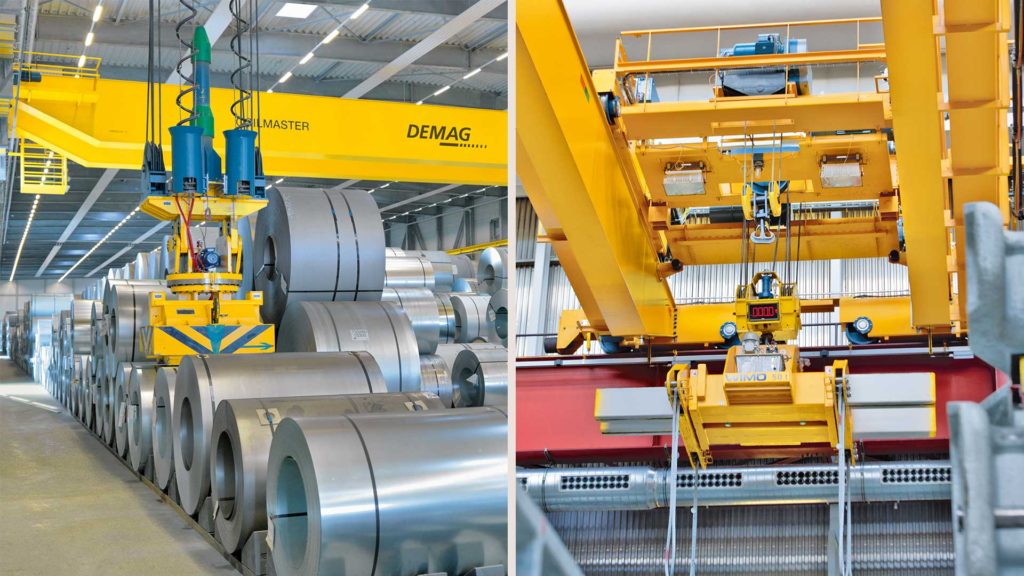
Mechanical Lifters
Constructed of two or more rigid parts, these manually actuated devices move in tandem to secure a load.
Vacuum Lifters
These devices utilize an electric-powered extraction pump and sealed pads to create a vacuum. The vacuum’s suction attaches the lifter to the load.
Sheet Lifters
These attachments use two claws that wrap around the edges of a load of sheet metal or wood. An integrated lip on the lower portion of the claws prevents the sheets from falling out of the lifter.
Pallet Lifters
Incorporating forks, these devices lift unitized pallet loads from underneath via the fork pockets.
Lifting Beams
Consisting of a beam suspended from a hoist and crane, these devices provide multiple load lifting points. This improves load security and control of its movement. Construction can be of solid or fabricated metal, or from wood. As a variation on lifting beams, spreader beams use two or more hooks to distribute the load over multiple attachment points.
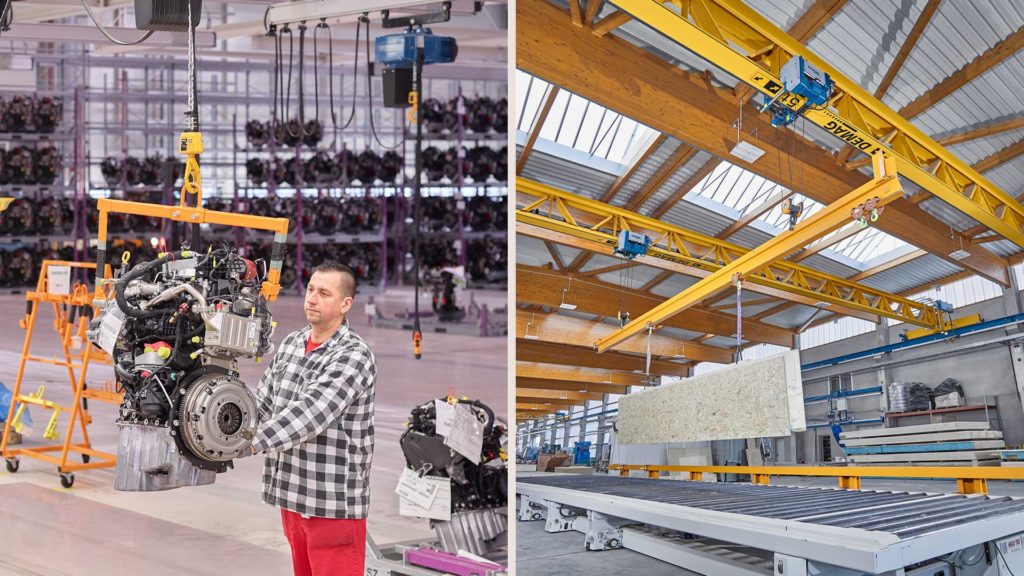
Magnets
Equipped with or without an electrical power supply, these devices lift, carry, or release flat or round ferrous objects.
Slings or Straps
Materials that are too large or bulky for lifting with any other attachment call for slings or straps. Made of nylon, polyester, wire rope or chain lift, these attachments frequently handle steel coils or sheets.
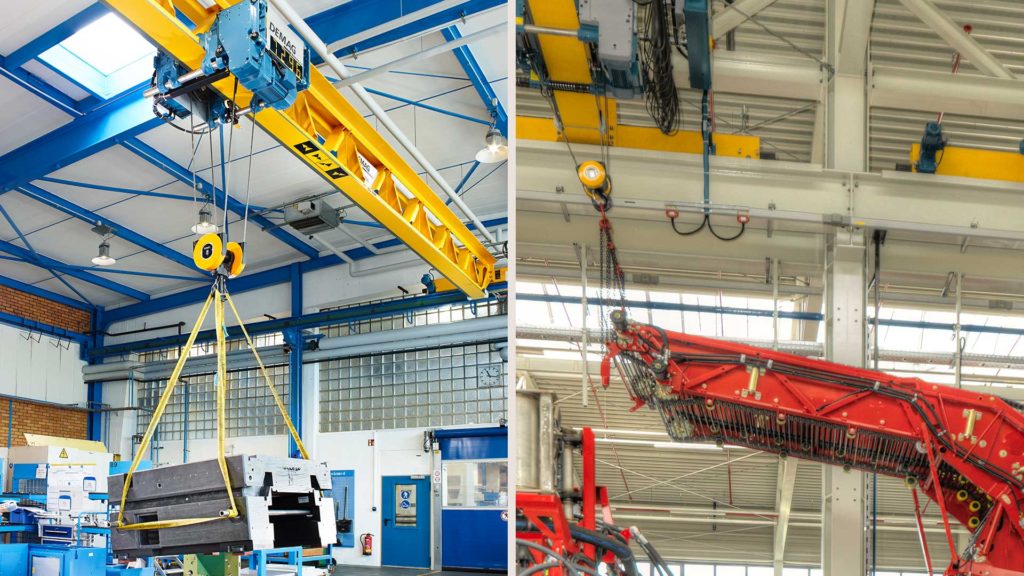
Drum Turners
These devices grip and turn drums over for filling and emptying.
Inspect Below the Hook Attachments Prior to Use
As with all overhead handling systems, operators should inspect any below the hook attachments prior to lifting the first load. This includes verifying that all attachment clamps or brackets are in place and properly functioning and confirming that no damage has occurred.
Want to learn more about below the hook attachments for overhead handling? MHI’s Overhead Alliance (which includes the Crane Manufacturers Association of America (CMAA), the Hoist Manufacturers Institute (HMI), and the Monorail Manufacturers Association (MMA)) explores 13 different ways these technologies enhance manufacturing and distribution operations in the free publication, “Expand Your Possibilities. Discover the Potential. Choose Overhead Lifting.”


